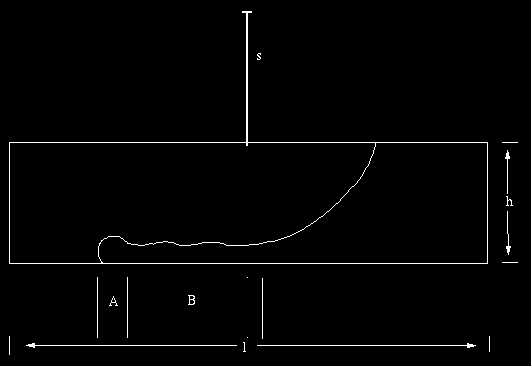

On the removal of the gate both start to intrude into each other under the influence of gravity. The heavier fluid spreads out along the bottom of the box, the lighter on top of it and in opposite direction. In real cases the heavy fluid might be very cold or even a liquefied gas taking heat from the environment for heating up or evaporating. For practical purposes the mixing mechanism at the gas interface is of great importance. One wants to know for example whether the leakage of a planned device results in an explosive or highly toxic mixture in a certain distance. The mixing is dynamical (Since the time scale of the problem is of the order of seconds, molecular diffusion processes usually play a minor role.) and its intensity depends very much on the growth of instabilities at the interface and behind the front marked B and A in the figure respectively. These instabilities might be enhanced, finally leading to rigorous turbulent entrainment or damped, depending on the Reynolds and Richardson number of the problem. The flow can be described by the Navier-Stokes equations with n-1 gas concentrations as additional variables.
Results of a numerical simulations: